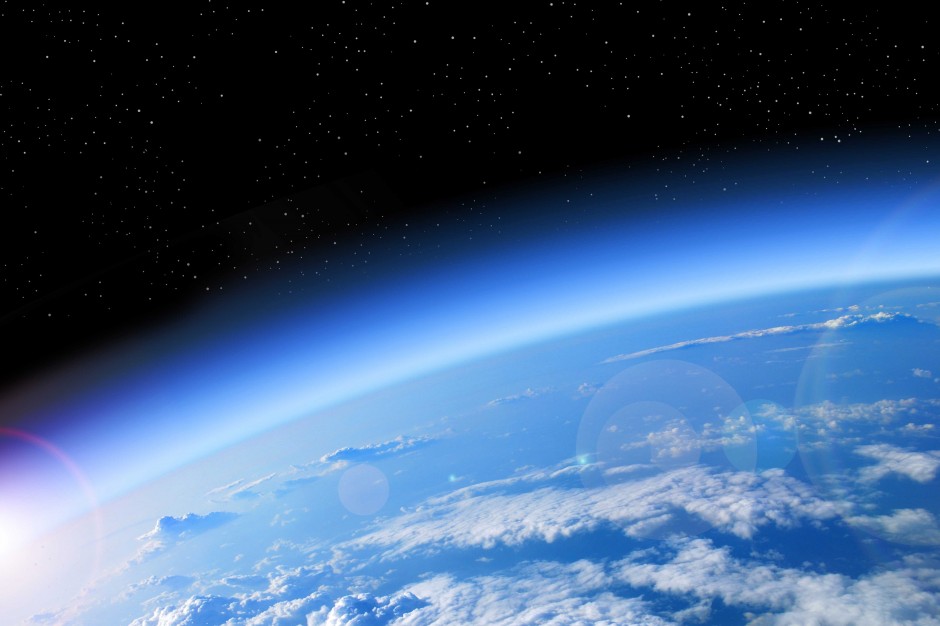A Recent Study Reveals A New Threat To The Ozone Layer, With India And China Playing A Big Role
ASTHA SHARMA

"Ozone depletion is a well-known phenomenon and, thanks to the success of the Montreal Protocol, is widely perceived as a problem solved," says University of East Anglia's David Oram. But an international team of researchers, led by Oram, has now found an unexpected, growing danger to the ozone layer from substances not regulated by the treaty. The study is published this week in Atmospheric Chemistry and Physics, a journal of the European Geosciences Union.
Large scale depletion of ozone layer, the UV-radiation guard in the Earth's stratosphere is a persisting global environmental crisis. It is primarily caused by the release of reactive chlorine and bromine species from halogenated organic compounds. Although the basic science is well established, there remains considerable ambiguity surrounding the long-term recovery of ozone layer. Large and effective reduction in emissions of long lived ozone depleting substances (ODS) is achieved through Montreal protocol. Thirty years ago, the Montreal Protocol was agreed to phase-out chemicals destroying the ozone layer. The treaty has helped the layer begin the slow process of healing, reducing the impact to human health from increased exposure to damaging solar radiation. But increasing emissions of ozone-destroying substances that are not regulated by the Montreal Protocol are threatening to affect the recovery of the layer, according to the new research. VSLSs, very short lived substances were not considered damaging for ozone before due to their short atmospheric life of less than 6 months and low background concentration, and were not regulated under Montreal Protocol. The new Atmospheric Chemistry and Physics study raises the alarm over fast-increasing emissions of some of these very short-lived chemicals in East Asia, and shows how they can be carried up into the stratosphere and deplete the ozone layer. Published study has found an unexplained increase in global tropospheric abundance of one of the VSLS, dichloromethane (CH2Cl2), a substance with uses varying from paint stripping to agricultural fumigation and the production of pharmaceuticals, showing an increase by around 60% in the past decade.
Because of their short lifetimes, the potential impact of VSLSs on stratospheric ozone is highly dependent on the location of their sources, with emissions close to the major stratospheric input regions being of far greater significance for ozone depletion. The transport of trace gases and aerosols from the troposphere into the stratosphere occurs primarily in the tropics, where convective activity and vertical uplift are most intense. Emissions of ozone-depleting chemicals in places like China and India are especially damaging because of cold-air surges in East Asia that can quickly carry industrial pollution into the tropics. "It is here that air is most likely to be uplifted into the stratosphere," says co-author Matt Ashfold, a researcher at the University of Nottingham Malaysia Campus. This means the chemicals can reach the ozone layer before they are degraded and while they can still cause damage. Study suggests that China may be responsible for around 50-60% of current global emissions of dichloromethane, with other Asian countries, including India, likely to be significant emitters as well.
The scientists collected air samples on the ground in Malaysia and Taiwan, in the region of the South China Sea, between 2012 and 2014. Dichloromethane was found in large amounts, and so was 1,2-dichloroethane, an ozone-depleting substance used to make PVC. China is the largest producer of PVC, which is used in many construction materials, and its production in the country has increased rapidly in the past couple of decades. But the rise in dichloroethane emissions was unexpected and surprising because the chemical is both a "valuable commodity" and "highly toxic," says Oram. "One would expect that care would be taken not to release [dichloroethane] into the atmosphere."Data collected from a passenger aircraft that flew over Southeast Asia between December 2012 and January 2014 showed that the substances weren't only present at ground level but also at elevated levels. Concentrations of these same chemicals were present at altitudes of 12 km over tropical regions, many thousands of kilometres away from their likely source, and in a region where air is known to be transferred into the stratosphere. If the chemicals that were now discovered in unexpectedly large amounts can reach the ozone layer in significant quantities, they can cause damage.
Journal Reference:
David E. Oram, Matthew J. Ashfold, Johannes C. Laube, Lauren J. Gooch, Stephen Humphrey, William T. Sturges, Emma Leedham-Elvidge, Grant L. Forster, Neil R. P. Harris, Mohammed Iqbal Mead, Azizan Abu Samah, Siew Moi Phang, Chang-Feng Ou-Yang, Neng-Huei Lin, Jia-Lin Wang, Angela K. Baker, Carl A. M. Brenninkmeijer, David Sherry. A growing threat to the ozone layer from short-lived anthropogenic chlorocarbons. Atmospheric Chemistry and Physics, 2017; 17 (19): 11929 DOI: 10.5194/acp-17-11929-2017



